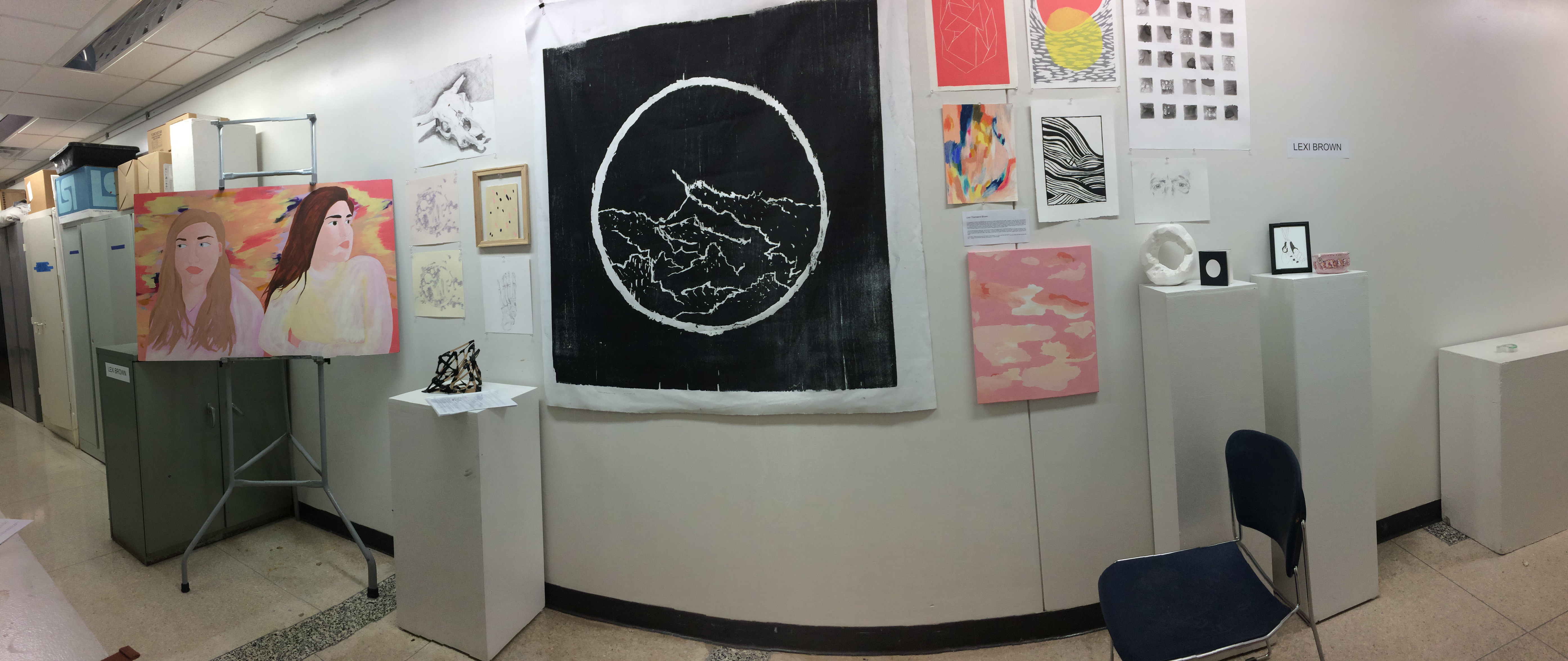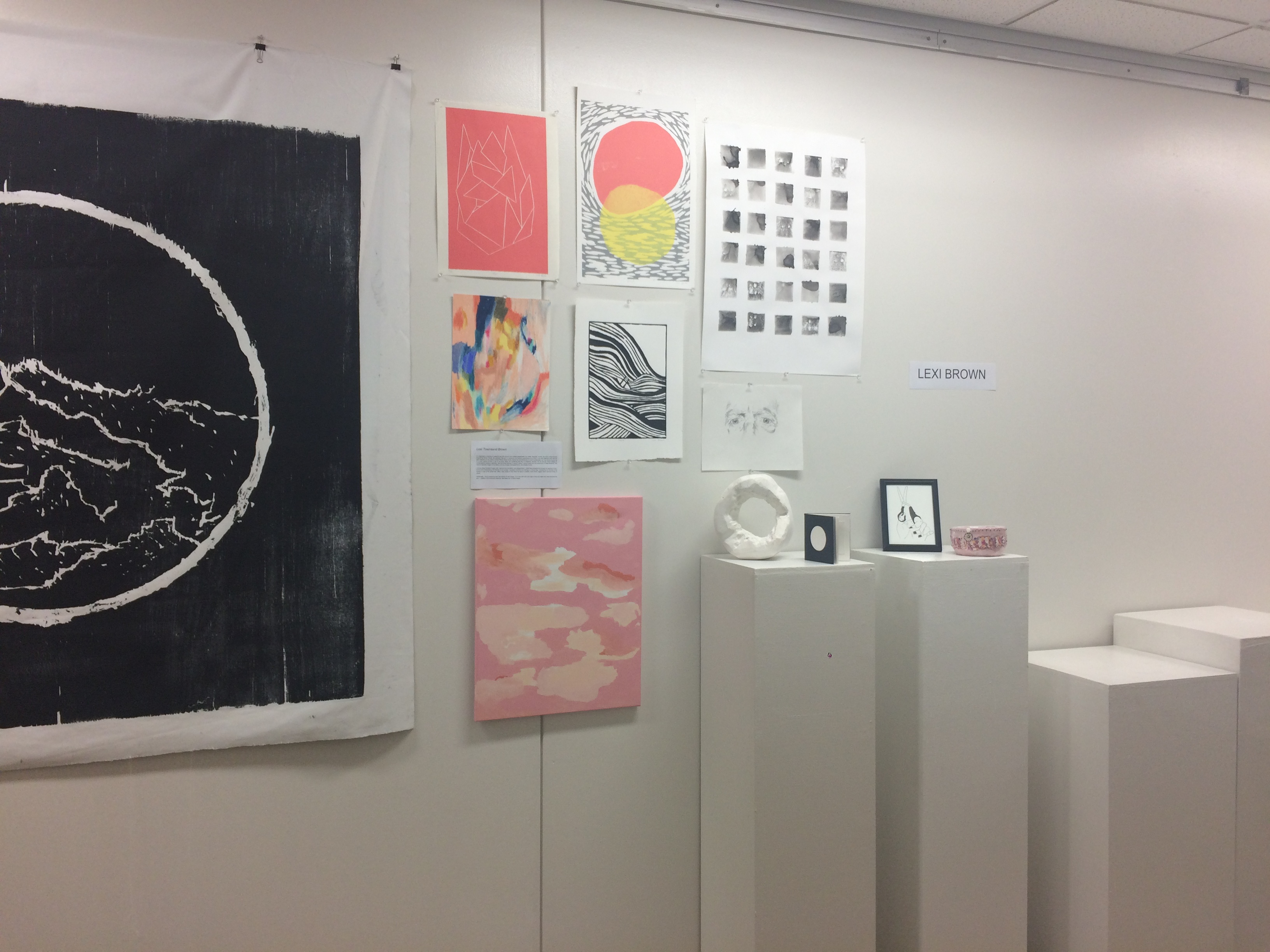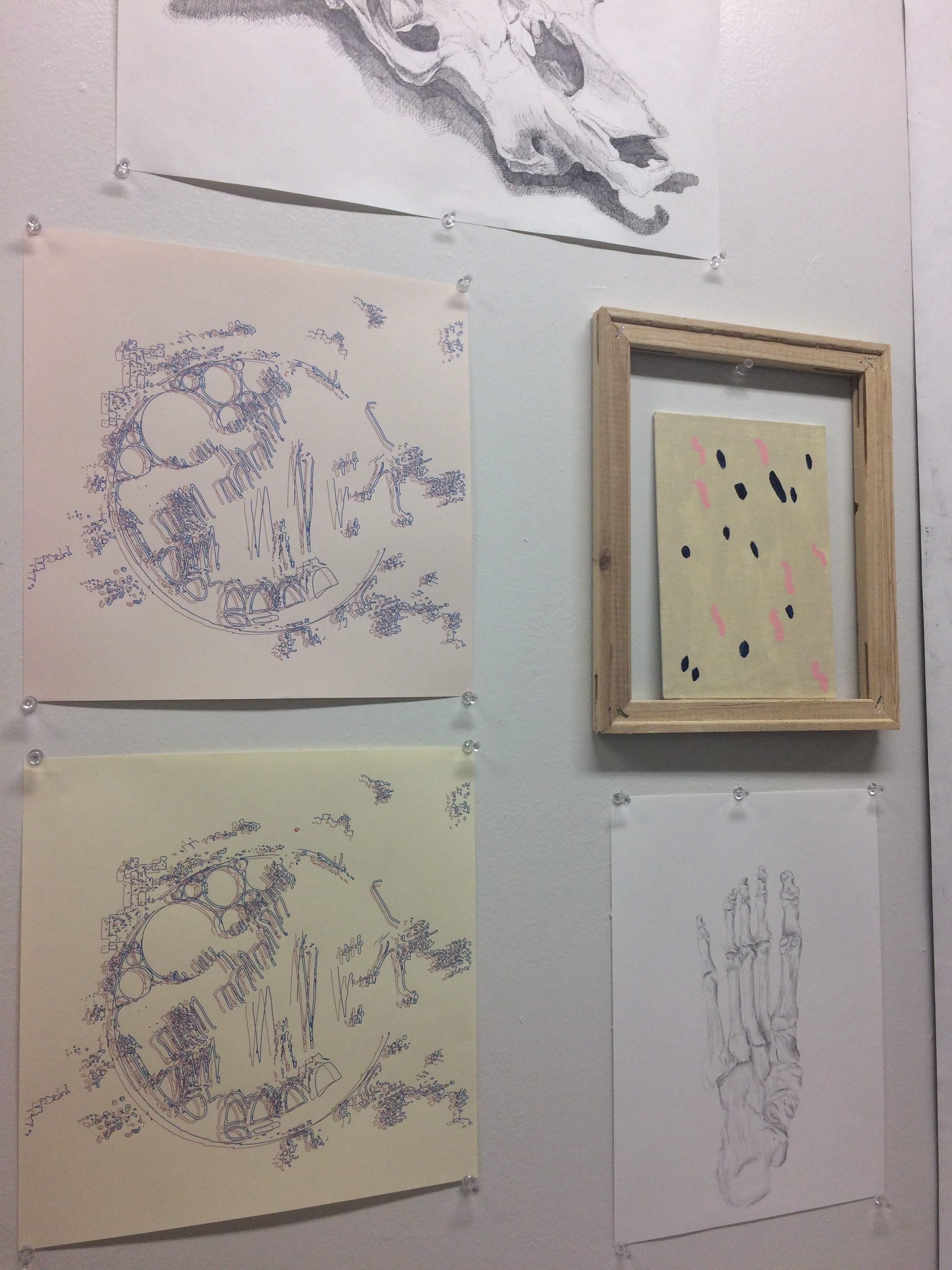Lexi Brown
- 1 What resources do you use for your ideas?My primary resources that I use for my ideas are internet culture, fabric design, typography, interior and furniture design, and my sisters (both artists, an animator and a metalworker, respectively). I find my greatest resource is in talking with them about their recent work, their ideas, and bouncing off my own ideas with them in both casual and more serious conversation.
- 2 What motivates you to make art?I’m a physical learner. The only way I know how to “think” is by making. Memories of past trauma motivate much of my work. Additionally, I’m driven to make art that reflects my obsession with order, readability and efficiency. The latter bit is particularly motivating in my design work.
- 3 How do you use color, space, form, and other dynamics in your work?I find myself using pinks and neutral tonalities over and over again in my work. I find pleasure and release in the opening up of space and the calming effects these colors provide. Calming pinks, oranges, and off-whites that at the same time possess a sort of quiet energy in their warmth. I often balance our these colors with dark blues. Negative space, asymmetrical balance, repetition of shape, and visual rhythm also allow me to achieve similar effects in my work. The circle is a common theme for me as well, as a way of containing intense feelings of emotion.
I use pink as a representation of lost girlhood, loss of innocence, and reclamation of childhood. This is a theme present in my work—exposure to the adult world, something I grew up with amid my sister’s illness and my experience in treatment.
I’m also drawn to diagonals. There is a concept in Dialectical Behavioral Therapy (DBT for short) about emotional progress: you think it’s going to be an upward trend, but it’s often a chaotic, messy, up and then down, and then up again—while all the time generally progressing up—graph. As a perfectionist and stubborn client of DBT, I’m always looking for ways to incorporate and seek out the perfect (yet occasionally jagged) upward trend.
- 4 How do you view your craftsmanship?Craft is something I continue to work on — and I’ve found greater interest and success in the digital aspects of my work because I’m able to remove the fingerprints and “the hand” entirely. I find that this pushes the work. My personal aesthetic is clean and smooth— mechanical-looking, almost.
- 5 What do you consider to be your strengths?I consider my ability to implement criticism and progress in the iteration process my greatest strength. A core value for me is self-improvement, which lends itself nicely in my determination to improve my creative work. I also consider a strength to be my technical ability to execute concepts in a physical way.
- 6 Are there skills you feel need further development?Sticking to my concept is the hardest part for me, and often keeps me from making work. Because my work is typically based in heavy themes, the emotional drain often deters me. I also want to increase my skills in the 3D, as I’m currently taking my first clay and sculpture courses. I hope to improve this area and experiment more in this medium.
- 7 How does your work relate to art historical precedents and contemporary trends?I’m inspired by the flat forms and heavy contour of Gauguin and Matisse, as well as the color palette of the Fauves. I also find myself drawn to Tuesday Bassen’s work—her Americana girl-gang aesthetic is appealing to me, as well as the idea of “wearable art.” As an artist who also considers herself a designer, this merging of the two is inspiring to me.
- 8 What are your expectations / goals for yourself over the next five years?I plan to graduate in a year with my Major in Art, Minor in Graphic Design and get hired by a design firm or website to produce online creative content. I also plan to continue to side-hustle and improve my craft both in and out of the studio.
Artist Statement
I’m interested in charting my experiences with trauma from multiple perspectives: as a sister, daughter, human. My work is informed and inspired by family, illness, and girlhood. My work is colored by my firsthand experiences as a minor in an adult addiction clinic and my early exposure to my sister’s mental illness; these events shaped me and influenced my work considerably, as I was forced to grow up in a short period of time. A lot of my work deals with reclaiming lost bits of childhood, whether this be through playful design or compositional choices in painting. I tap into these feelings of “being 5, being 7, being 9 years old” and experiment in these emotions. The result is typically images of my sisters, primary shapes, abstracted forms, and shades of pink.
I convey these themes through order, rigorous documentation, and categorization. I chart these perspectives through the layering of color, all the while emphasizing the flatness of my surface. I represent emotions and feelings in a visual way, emphasizing the flatness of the surface to add to the “graph-like” effect. Open areas of color allow me space to breathe, while harsh, jagged marks represent times of stress.
Additionally, I enjoy producing work that blends art with design. I’m in love with both and hope to find and make work that combines the two — whether it be vectorized drawings, text-based art, or textile design.




